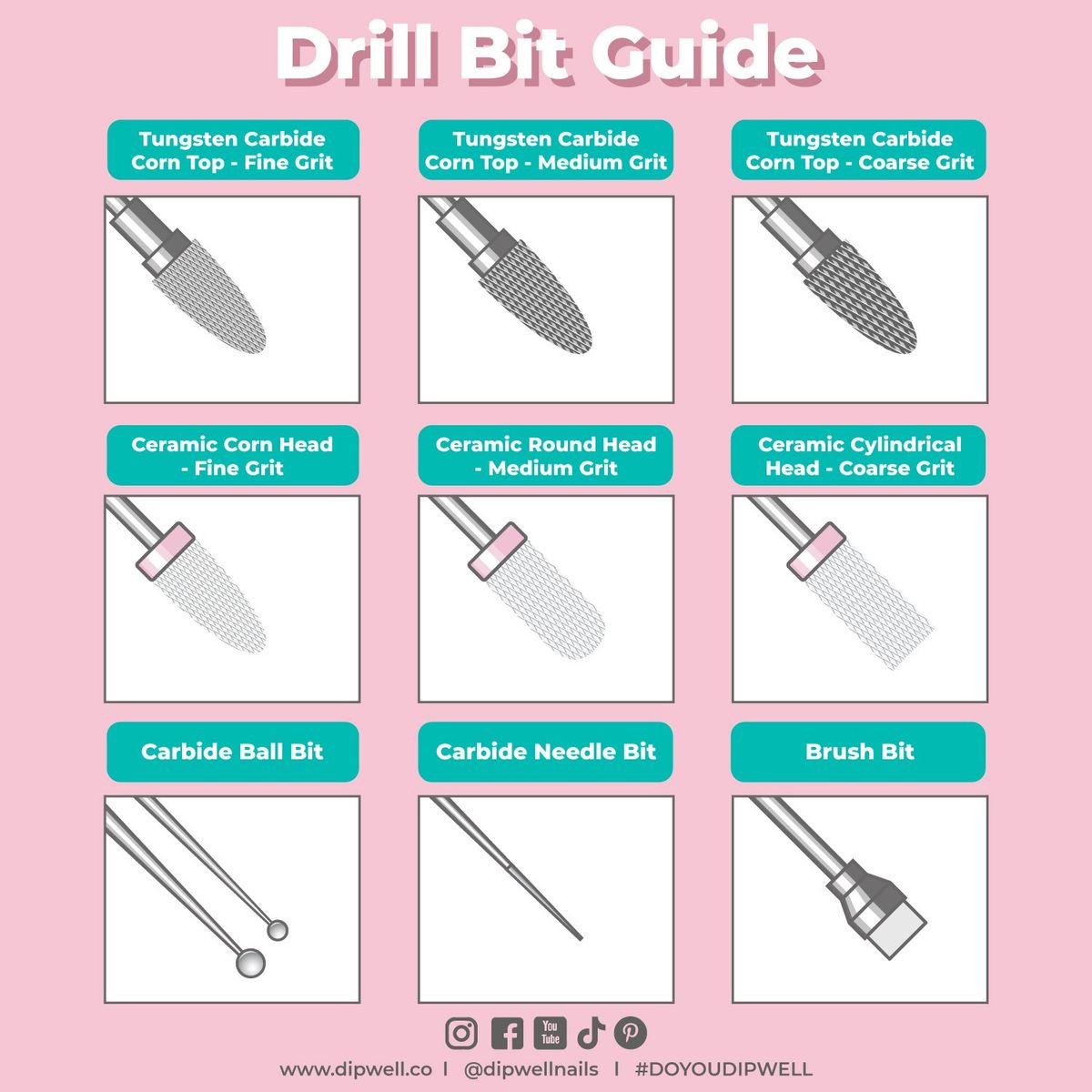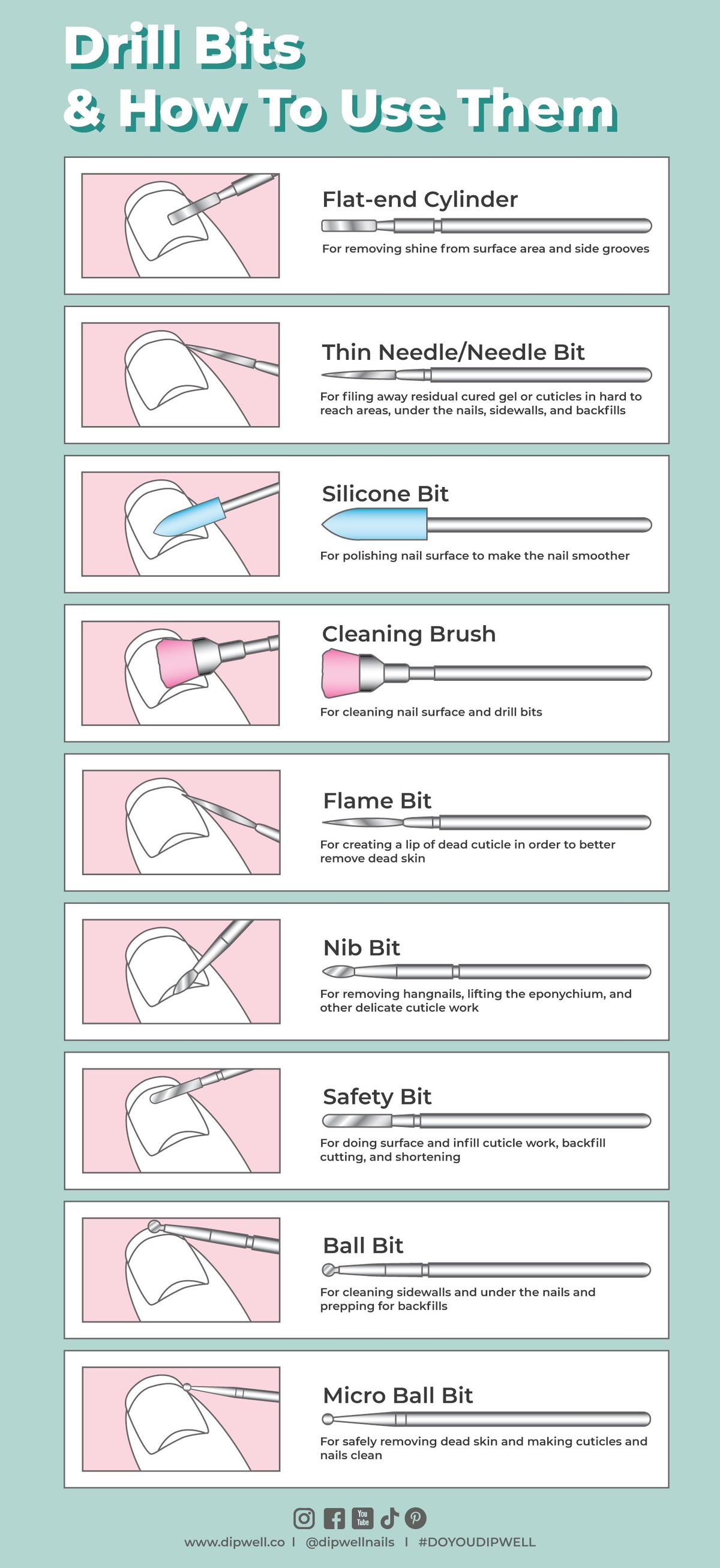How To Use Emery Tool For Nails
Insta-worthy dip nails can't be accomplished without Marie Antoinette'southward favorite nail intendance tool: the nail file.
As seen on our DIY dip mani tutorials, we use an electric or manual nail file for:
(1) Nail Prep: Ready yourself up for success by buffing away your invisible cuticles, and creating a rough nail surface to forestall lifting
(two) Shaping/Buffing: Become your desired blast shape and mani stop by buffing downwards your dip powder before applying Sealer
In the history of nail smoothen, we've discovered that Mary E. Cobb was the inventor of the emery board files we've grown upward seeing in drugstores. Today we're going across history. We're talking about the essentials of electrical nail drills and the nitty-gritty of manual nail files.
The Essentials of Electric Blast Drills
What is an electric nail drill?
An electric nail drill or e-file is an electric-powered rotary tool used for filing nails or removing nail enhancements. To practice specific jobs, a nail drill would need "bits". These coated drill tips come in diverse grits, materials, sizes, and shapes. You have choices of carbide bits, diamond bits, ceramic $.25, among others.
- CARBIDE BITS: For cutting or shaping gel and acrylic nails by shaving off layers of the mani
- DIAMOND BITS:For removing product build-up by scratching off the blast surface
- CERAMIC BITS: For the same purposes but with less friction and heat

How do you utilize an electric nail drill?
Before y'all drown yourself in a sea of choices, let's summarize how or when to use each flake in a basic ten-piece set of nail drill bits.
- FLAME Flake: For creating an noon and cleaning around the cuticle area
- NIB BIT: For removing hangnails, gently lifting the eponychium—the smash fold at the base of the nail plate—and other delicate cuticle piece of work
- SAFETY BIT: For doing surface and infill cuticle work, backfill cutting, and shortening
- BALL Chip: For cleaning sidewalls and under the nails and prepping for backfills
- MICRO BALL Bit: For safely removing dead skin and making cuticles and nails clean
- Flat-Cease CYLINDER Bit: For removing shine from surface area and side grooves
- NEEDLE / Thin NEEDLE BIT: For filing away residual cured gel or cuticles in hard to accomplish areas, under the nails, sidewalls, and backfills
- SILICONE Fleck: For polishing nail surface to make the nail smoother
- CLEANING Castor: For cleaning nail surface and drill $.25

A friendly reminder from Sine, Licensed Cosmetologist and DipWell'south Community Educator:
"E-files exercise require some preparation, learning safe measures, and practice. Proper use of how to utilize an electric nail drill and the bits safely is especially important to avert blast damage. If you utilize an electrical nail file and it starts to cause you pain, cease immediately. This should non happen if it is used correctly. You never want to use the e-file on the natural nail. The natural blast should only be filed with a lite hand and 180-grit file or college."
If you're a DIY dip mani newbie, nosotros recommend sticking with manual nail files. But if you're swell to power upward your nail care routine with an eastward-file, nosotros can't stress enough how of import it is to larn, learn, and learn some more. Refer to your nail drill's transmission. Read up on how to fix up electric nail files, including safety tips. You can also head over to YouTube and watch "how to utilise a blast drill" instructional videos. A thorough understanding of how to operate electric nail drills will preclude damage to your nails and potential trips to your doctor. Ever better condom than sorry.
The Nitty-Gritty of Transmission Nail Files
What is a manual nail file?
This is the almost convenient nail file that comes in many forms.
- EMERY BOARDS: The nearly common manual nail file that'southward made of cardboard and usually has different grits on its two sides.
- WOODEN NAIL FILES: These are similar to emery boards, just they are made with wood as opposed to cardboard. They are also available in different grits.
- BUFFING BLOCKS: They come in a variety of grits and sizes (regular and mini).
- METAL Boom FILES: These transmission nail files are made of stainless steel and can exist a scrap harsh for natural nails. They are more suited for smash enhancements.
- SPONGE BOARDS: These are actress thick cushion manual nail files that are made with no paper bankroll. They are available in a multifariousness of grits and can be sanitized and disinfected.
Choosing the best-for-you transmission nail file comes down to what your needs are with the nail file dust as the main criteria.
What is the nail file grit number?
"The file dust number refers to the abrasiveness of the smash file. You want to cull the right grit smash file so you don't damage your natural smash bed," says licensed cosmetologist Sine.
How practice you lot know if your nail file has a low or high grit number? Run your finger over the nail file and experience the particles. A low grit smash file is more than abrasive, while a high grit nail file is smoother.
She also recommended the guideline below:
- Depression Grit NUMBER: For bogus nail enhancements
- HIGH GRIT NUMBER: For natural nails
The file grit number starts equally depression equally eighty (coarse) and as loftier as thou+ (superfine).
Here'south a handy chart to lay this all out.
Blast FILE GRIT GUIDE

What are the types of transmission nail files?
If those file grit numbers seem daunting, don't let them overwhelm yous. According to Sine, DipWell's Customs Educator, in that location are four types of boom files a DIY-er like you volition need to use.
- COARSE FILES (80-100 grit): For shaping acrylic or gel nail enhancements and filing down thickness and length
These transmission smash files have fewer grit particles, hence they are very abrasive manual nail files and not recommended to be used on natural nails.
- MEDIUM Grit FILES (180 grit): For lightly buffing dip, acrylic, or gel enhancements and for filing the free border of your natural nails
These nail files are less abrasive because they contain more dust particles. But much like coarse files, they are likewise not recommended to be used for buffing natural nails.
- FINE GRIT FILES (240-600 grit):For smoothing and finishing piece of work on dip, acrylics, wraps, and gels. They are also great for removing natural oils and invisible cuticles.
These manual nail files are the least abrasive and soft enough to lightly vitrify the natural nail bed without thinning and causing nail harm.
- Extra FINE Grit FILES (600-2400 grit): For creating high shine on natural nails and nail enhancements, making the nail appear as if height glaze has been applied
These blast files will feel shine to the touch when yous run your finger over them. They are too used to prepare the surface of your natural nail for buffing, shining, finishing, and removing ridges and stains.
Electrical file vs. manual file: Which DIY boom care tool should you choose?
The truth: you don't really demand an eastward-file. You tin go amazing results with just the right transmission nail files and buffers. But nail pros and experienced DIYers sure adopt an electric file since it's a faster way to prep and shape your nails when used correctly, although it does accept time to chief them.
At present that we've shared both sides of this hot-push topic, tell us...
Are you Team E-file or Team Manual File?
Join the conversation in DipWell's Dipper Lodge, or connect with us on Instagram via @dipwellnails or our official hashtag #DoYouDipWell. Hope to see y'all there!
Source: https://www.dipwell.co/blogs/ultimate-nail-file-guide
Posted by: dickensevervall.blogspot.com


0 Response to "How To Use Emery Tool For Nails"
Post a Comment